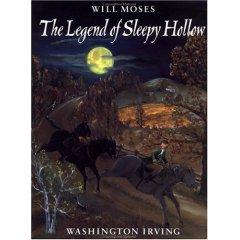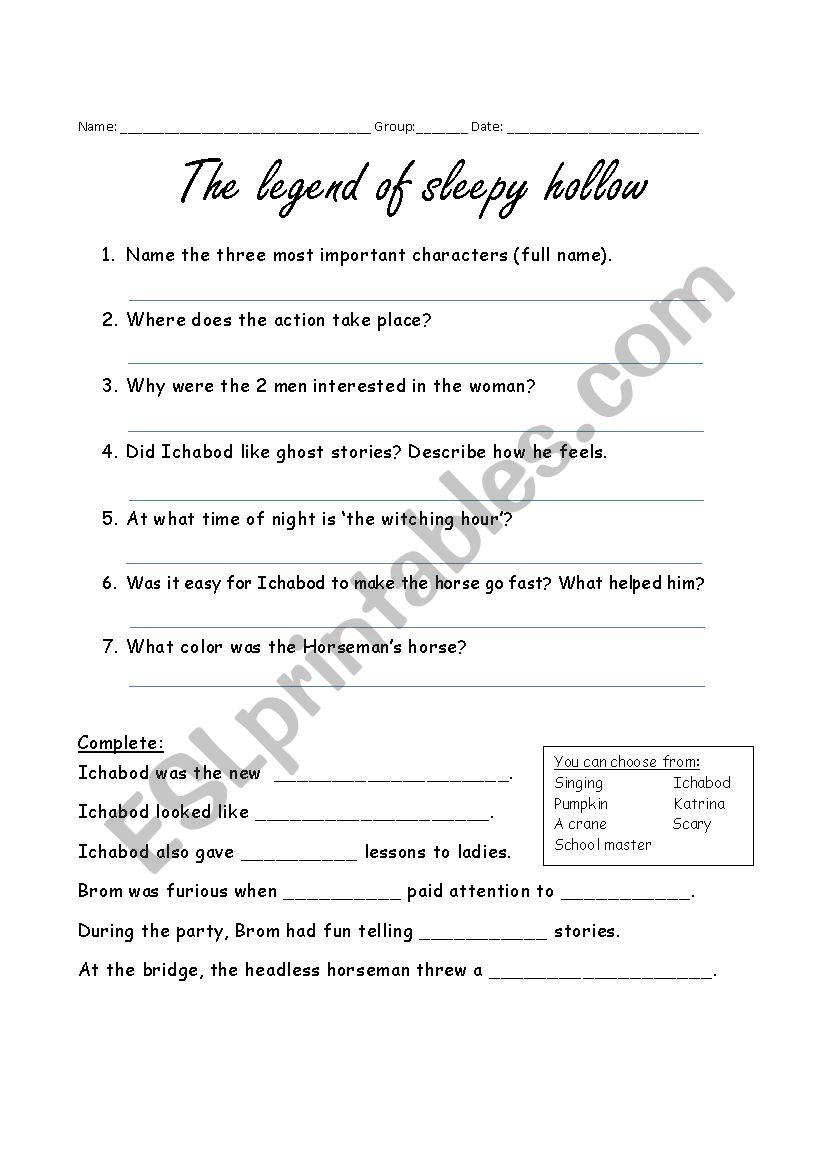

It encountered his cranium with a tremendous crash, – he was tumbled headlong into the dust, and Gunpowder, the black steed, and the goblin rider, passed by like a whirlwind. Ichabod endeavored to dodge the horrible missile, but too late. Just then he saw the goblin rising in his stirrups, and in the very act of hurling his head at him. Look at how Irving describes the final moments before Crane disappears forever: Focalisation describes whose eyes we ‘see’ the story through, and although we start out viewing the gangling schoolmaster from a distance, as it were, we are soon ushered into his own superstitions and fears during that hectic horse-ride home. The other narrative effect Irving uses to clever effect in ‘The Legend of Sleepy Hollow’ is to keep the focalisation of the story quite close to Ichabod Crane himself. He can only pass on tentative knowledge of what happened, and this goes for the events surrounding Crane’s eventual disappearance when the ‘headless horseman’ chases him. Thanks, Washington Irving!)Įarlier, Knickerbocker had declared, ‘I profess not to know how women’s hearts are wooed and won.’ But now it’s not just women’s hearts or minds that he admits his ignorance of it’s what went on between Crane and Katrina as he sought to woo her.

Over in England, the ‘knickerbockers’ used to describe men’s clothing became shortened to ‘knickers’ and was applied to women’s underwear. (Incidentally, that surname, which was Irving’s own invention, came to be used as a nickname for an inhabitant of New York eventually, it inspired the name of men’s colourful trousers and, by association, the multicoloured ice-cream dessert the knickerbocker glory. First, Irving’s narrator is the figure he uses as editor and narrator for many of his writings: Diedrich Knickerbocker. We are led to believe this, but Irving’s narrative does not confirm it at any point.Īnd two aspects of Irving’s story make it difficult for us to determine whether the events of the story are meant to be taken as genuinely supernatural or as a hoax perpetrated by Brom Bones. But what does the story mean? Should we view it as an out-and-out ‘Gothic’ tale, or as a more realist tale which merely draws upon Gothic elements? Part of the problem is that we cannot be entirely sure that the ghost of the headless horseman whom Crane encounters towards the end of the narrative really is just Brom Bones in disguise, determined to give his love rival a fright and clear the way for him to woo Katrina for himself.


 0 kommentar(er)
0 kommentar(er)
